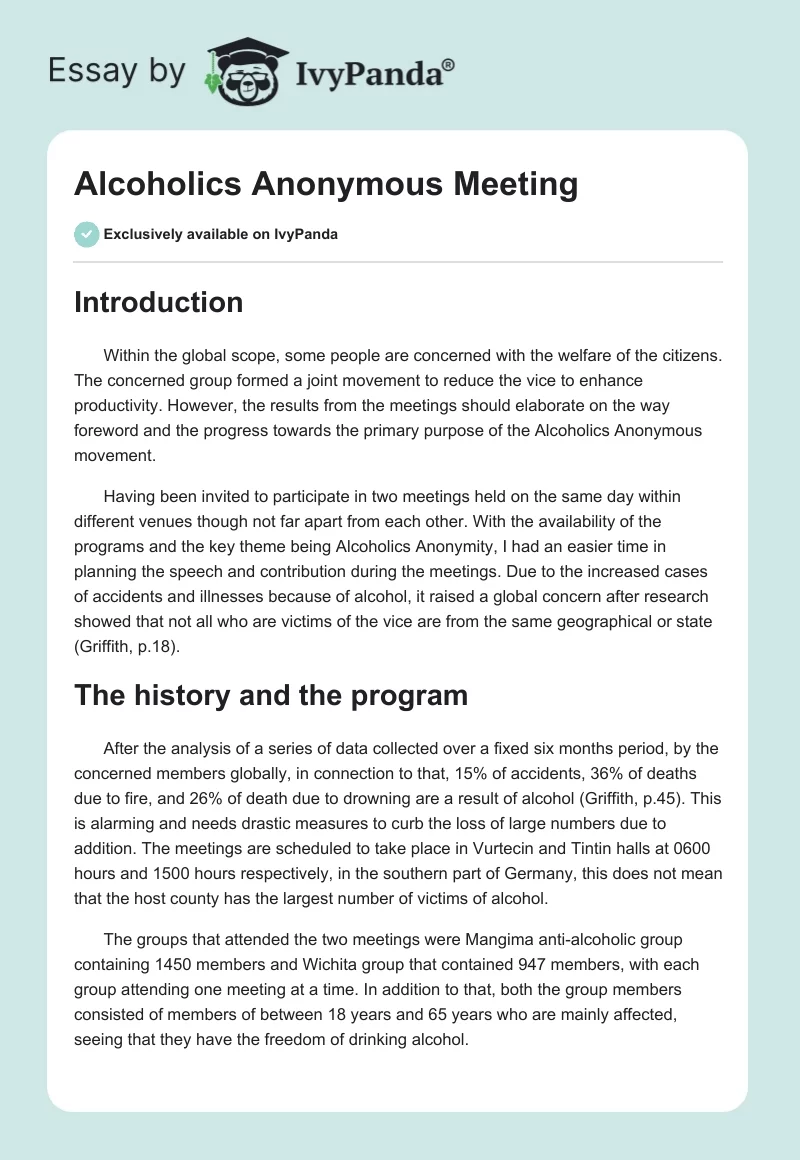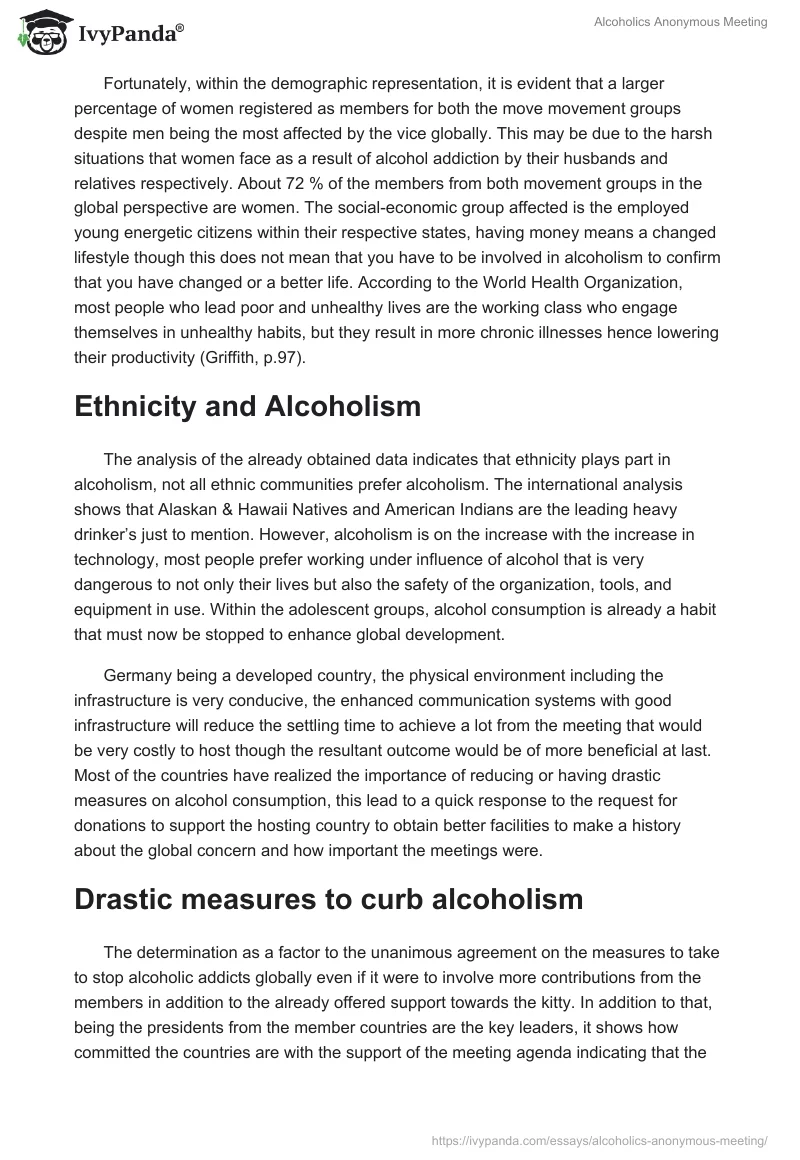Introduction
Within the global scope, some people are concerned with the welfare of the citizens. The concerned group formed a joint movement to reduce the vice to enhance productivity. However, the results from the meetings should elaborate on the way foreword and the progress towards the primary purpose of the Alcoholics Anonymous movement.
Having been invited to participate in two meetings held on the same day within different venues though not far apart from each other. With the availability of the programs and the key theme being Alcoholics Anonymity, I had an easier time in planning the speech and contribution during the meetings. Due to the increased cases of accidents and illnesses because of alcohol, it raised a global concern after research showed that not all who are victims of the vice are from the same geographical or state (Griffith, p.18).
The history and the program
After the analysis of a series of data collected over a fixed six months period, by the concerned members globally, in connection to that, 15% of accidents, 36% of deaths due to fire, and 26% of death due to drowning are a result of alcohol (Griffith, p.45). This is alarming and needs drastic measures to curb the loss of large numbers due to addition. The meetings are scheduled to take place in Vurtecin and Tintin halls at 0600 hours and 1500 hours respectively, in the southern part of Germany, this does not mean that the host county has the largest number of victims of alcohol.
The groups that attended the two meetings were Mangima anti-alcoholic group containing 1450 members and Wichita group that contained 947 members, with each group attending one meeting at a time. In addition to that, both the group members consisted of members of between 18 years and 65 years who are mainly affected, seeing that they have the freedom of drinking alcohol.
Fortunately, within the demographic representation, it is evident that a larger percentage of women registered as members for both the move movement groups despite men being the most affected by the vice globally. This may be due to the harsh situations that women face as a result of alcohol addiction by their husbands and relatives respectively. About 72 % of the members from both movement groups in the global perspective are women. The social-economic group affected is the employed young energetic citizens within their respective states, having money means a changed lifestyle though this does not mean that you have to be involved in alcoholism to confirm that you have changed or a better life. According to the World Health Organization, most people who lead poor and unhealthy lives are the working class who engage themselves in unhealthy habits, but they result in more chronic illnesses hence lowering their productivity (Griffith, p.97).
Ethnicity and Alcoholism
The analysis of the already obtained data indicates that ethnicity plays part in alcoholism, not all ethnic communities prefer alcoholism. The international analysis shows that Alaskan & Hawaii Natives and American Indians are the leading heavy drinker’s just to mention. However, alcoholism is on the increase with the increase in technology, most people prefer working under influence of alcohol that is very dangerous to not only their lives but also the safety of the organization, tools, and equipment in use. Within the adolescent groups, alcohol consumption is already a habit that must now be stopped to enhance global development.
Germany being a developed country, the physical environment including the infrastructure is very conducive, the enhanced communication systems with good infrastructure will reduce the settling time to achieve a lot from the meeting that would be very costly to host though the resultant outcome would be of more beneficial at last. Most of the countries have realized the importance of reducing or having drastic measures on alcohol consumption, this lead to a quick response to the request for donations to support the hosting country to obtain better facilities to make a history about the global concern and how important the meetings were.
Drastic measures to curb alcoholism
The determination as a factor to the unanimous agreement on the measures to take to stop alcoholic addicts globally even if it were to involve more contributions from the members in addition to the already offered support towards the kitty. In addition to that, being the presidents from the member countries are the key leaders, it shows how committed the countries are with the support of the meeting agenda indicating that the various presidents to declare their stand on the matter and how they are prepared to assist in the war at the country level. First, the presidents’ are requested to constitutionally enact a bill to lower the production of alcoholic substances with a reduced percentage of the alcoholic content to a maximum of 0.25% of which they accepted to adopt (Griffith, p.103).
Conclusion
This meeting was held to get the way forward in the quest to let the citizens stay sober in the global perspective. It is a matter of global concern, having travelers and tourists move from one country to the other, the effects of the drastic measures will support the government so that the tourists are also aware that alcoholism is a global concern and should be carefully traded. Failure to follow the masers may lead to a great loss to the country as a whole as the victim would have done something worthwhile to the development of the country.
Works Cited
Griffith, Edwards, The World’s Favorite Drug. New York, St. Martin’s Press, 2003.


